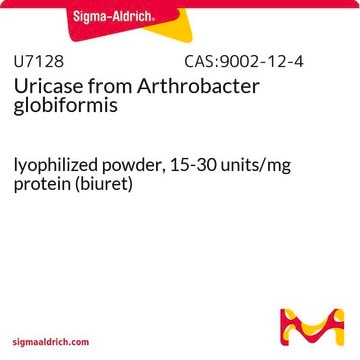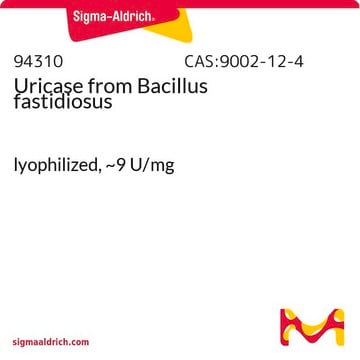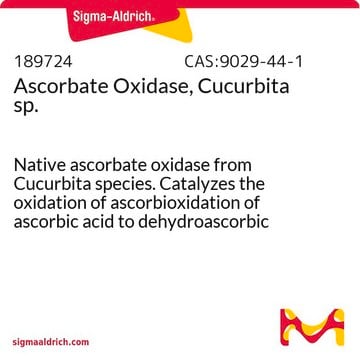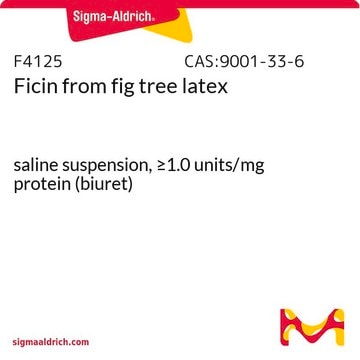U0880
Uricase from Candida sp.
recombinant, expressed in E. coli, lyophilized powder, ≥2 units/mg solid
Synonym(s):
Urate: oxygen oxoreductase
About This Item
Recommended Products
recombinant
expressed in E. coli
form
lyophilized powder
specific activity
≥2 units/mg solid
mol wt
35 kDa by SDS-PAGE
storage temp.
−20°C
InChI
1S/C18H23N4O14P.H3N/c23-5-7-14(13(28)16(34-7)22-4-2-10(25)20-18(22)30)36-37(31,32)33-6-8-11(26)12(27)15(35-8)21-3-1-9(24)19-17(21)29;/h1-4,7-8,11-16,23,26-28H,5-6H2,(H,31,32)(H,19,24,29)(H,20,25,30);1H3
InChI key
VPXDHZMLJOJKOX-UHFFFAOYSA-N
General description
Application
- to eliminate urate in plasma samples and evaluate the contribution of urate to the total plasma antioxidant capacity
- to intraperitoneally inject the mice to study the role of uric acid in fibrin extracellular traps (ET) formation
- for elimination of uric acid in ferric reducing/antioxidative power (FRAP) assay to measure the total antioxidative capacity of human plasma sample; in uricase-based biosensors
Biochem/physiol Actions
Unit Definition
Physical form
Storage Class
11 - Combustible Solids
wgk_germany
WGK 3
flash_point_f
Not applicable
flash_point_c
Not applicable
Certificates of Analysis (COA)
Search for Certificates of Analysis (COA) by entering the products Lot/Batch Number. Lot and Batch Numbers can be found on a product’s label following the words ‘Lot’ or ‘Batch’.
Already Own This Product?
Find documentation for the products that you have recently purchased in the Document Library.
Customers Also Viewed
Our team of scientists has experience in all areas of research including Life Science, Material Science, Chemical Synthesis, Chromatography, Analytical and many others.
Contact Technical Service








